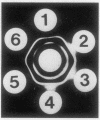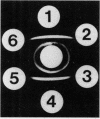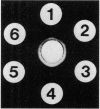Abstract
An immunodiffusion technique was used to evaluate the antigenic relationship of various pathogenic and saprobic Basidiobolus spp., Conidiobolus spp., isolates of the order Mucorales, and several other medically important nonzygomycetous fungi. The antiserum to Basidiobolus haptosporus shared two lines of identity, designated inner (N) and outer (Y), when tested against exoantigens of known strains of B. haptosporus and Basidiobolus ranarum as well as exoantigens of a human Nigerian isolate and several wild isolates tentatively identified in B. ranarum. Both bands were heat stable at 56 degrees C for 30 min. Exoantigens of strains of Basidiobolus meristosporus, Basidiobolus microsporus, Conidiobolus incongruus, Conidiobolus coronatus, and other wild isolates of Basidiobolus spp. tested formed only the N immunoprecipitin band. Exoantigens of 10 isolates from other taxa did not produce any cross-reactive precipitin line. B. meristosporus antiserum that was tested against exoantigens of Basidiobolus spp. and of Conidiobolus spp. developed only an N band without a Y band. These data suggest that B. haptosporus and B. ranarum are antigenically similar to each other and distinct from B. meristosporus. Basidiobolus spp. and Conidiobolus spp. share a common N immunoprecipitin band, which implies a taxonomic relationship between these two genera. The absence of lines of identity between Basidiobolus spp. and other fungi tested suggests that, antigenically, Basidiobolus is a distinct genus.
Full text
PDF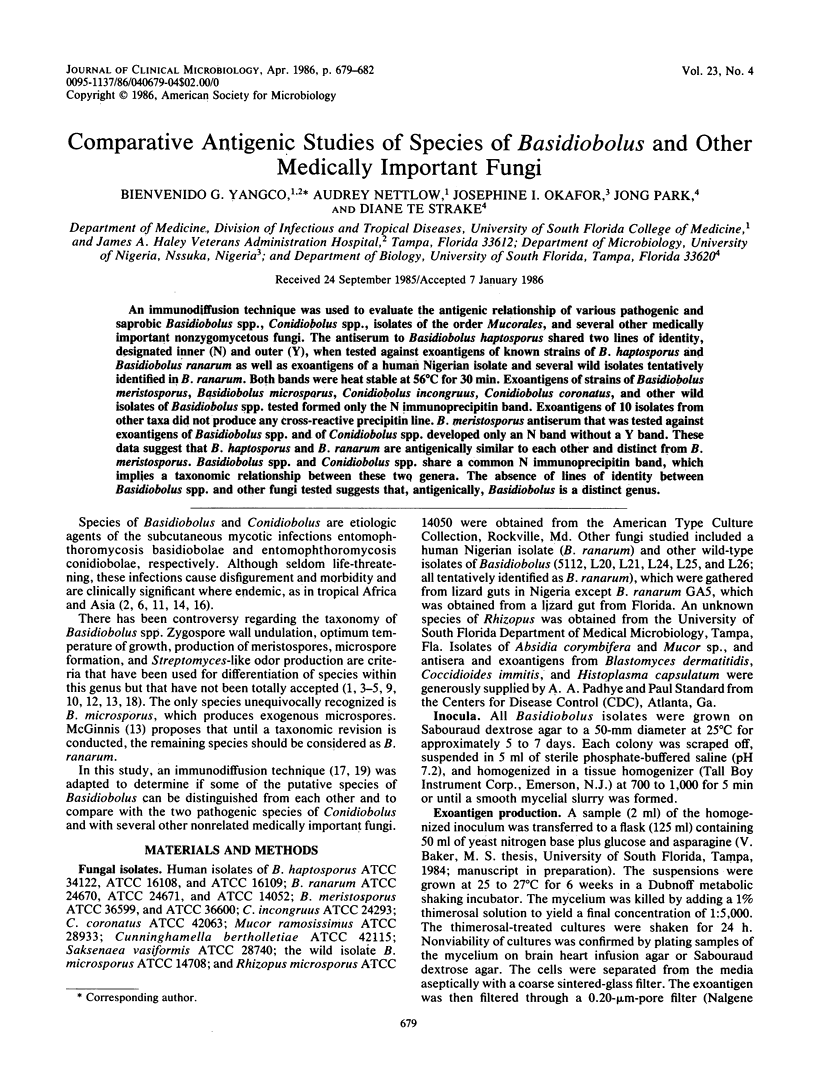
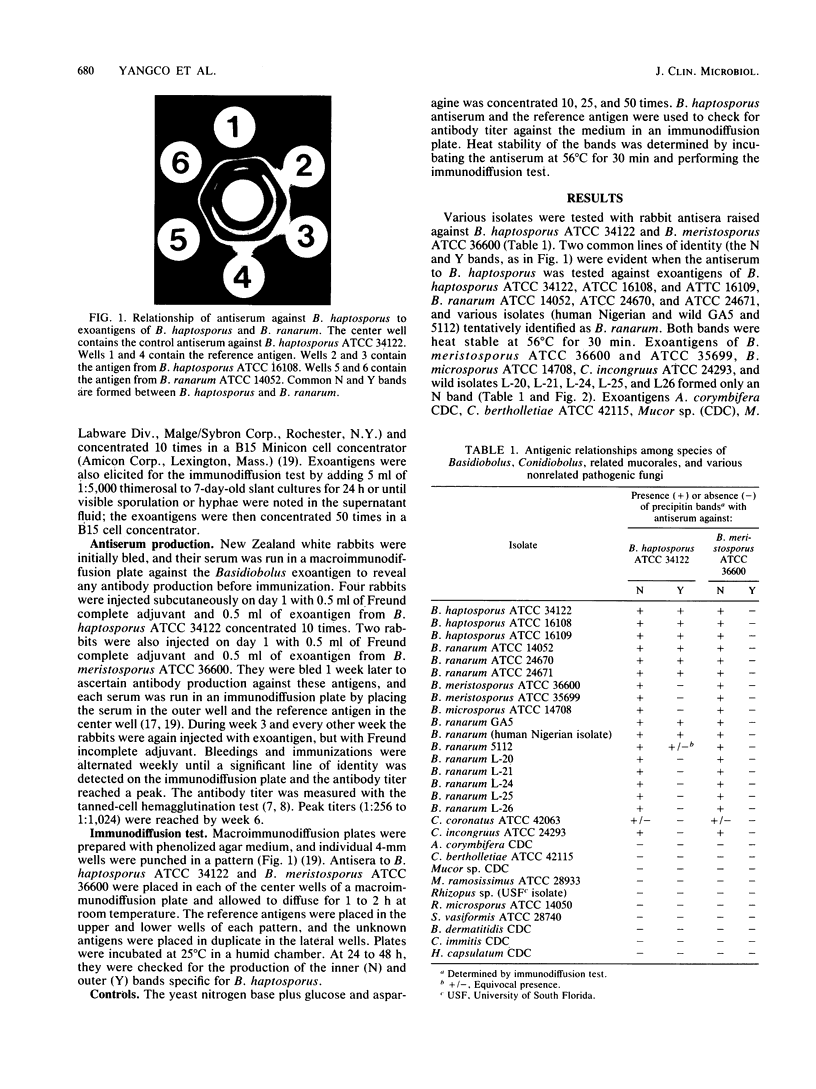
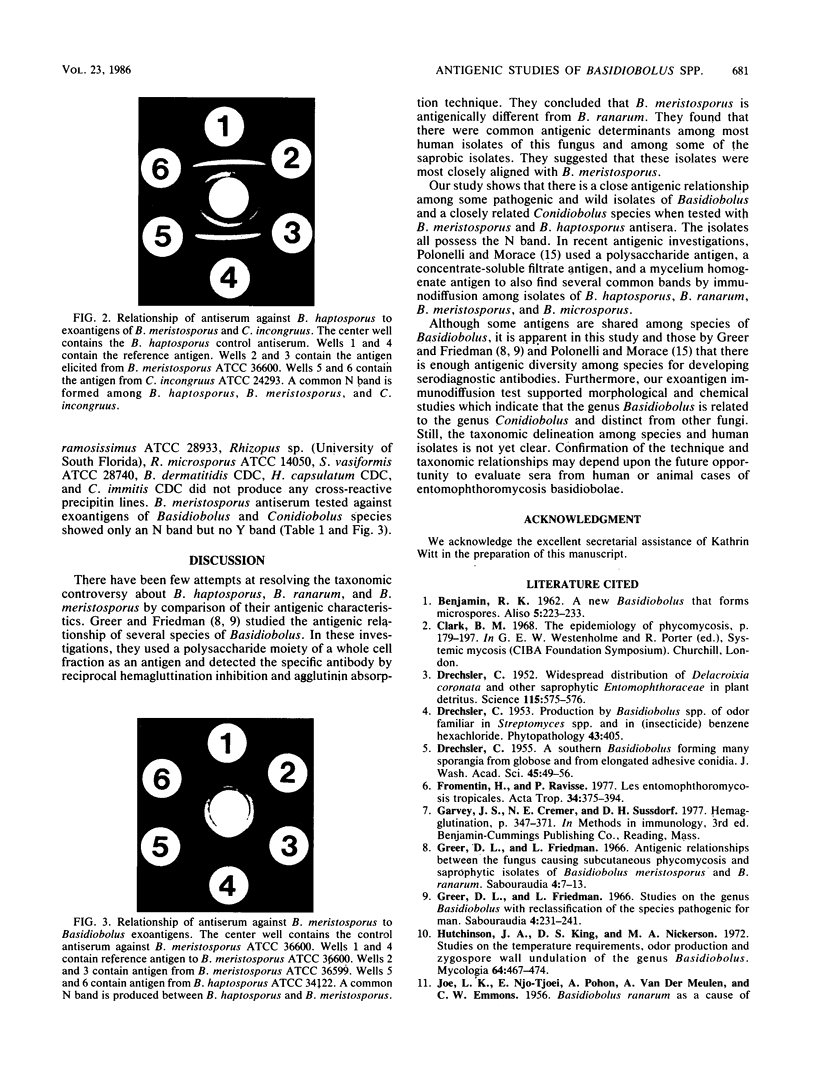
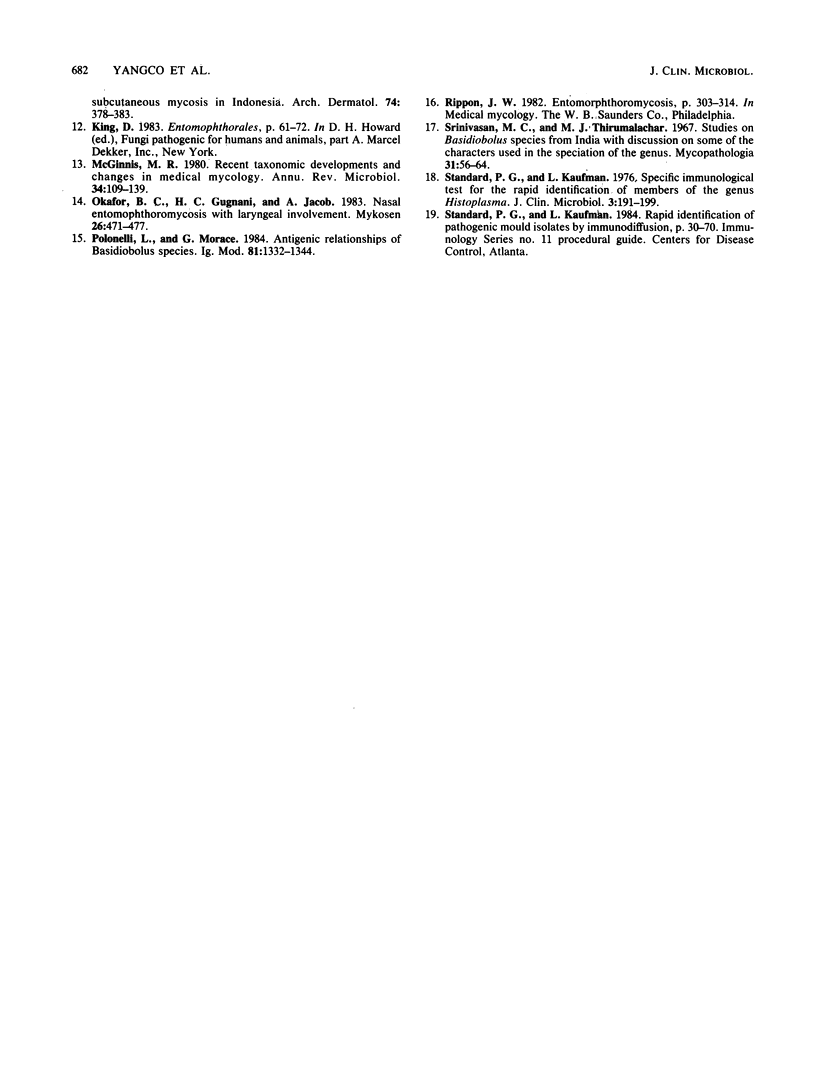
Images in this article
Selected References
These references are in PubMed. This may not be the complete list of references from this article.
- Drechsler C. Widespread Distribution of Delacroixia coronata and other Saprophytic Entomophthoraceae in Plant Detritus. Science. 1952 May 23;115(2995):575–576. doi: 10.1126/science.115.2995.575. [DOI] [PubMed] [Google Scholar]
- Fromentin H., Ravisse P. Les entomophthoromycoses tropicales. Acta Trop. 1977 Dec;34(4):375–394. [PubMed] [Google Scholar]
- Greer D. L., Friedman L. Antigenic relationships between the fungus causing subcutaneous phycomycosis and saprophytic isolates of Basidiobolus meristosporus and B. ranarum. Sabouraudia. 1966 Jun;5(1):7–13. doi: 10.1080/00362176785190031. [DOI] [PubMed] [Google Scholar]
- Greer D. L., Friedman L. Studies on the genus Basidiobolus with reclassification of the species pathogenic for man. Sabouraudia. 1966 Feb;4(4):231–241. [PubMed] [Google Scholar]
- Hutchison J. A., King D. S., Nickerson M. A. Studies on temperature requirements, odor production and zygospore wall undulation of the genus basidiobolus. Mycologia. 1972 May-Jun;64(3):467–474. [PubMed] [Google Scholar]
- McGinnis M. R. Recent taxonomic developments and changes in medical mycology. Annu Rev Microbiol. 1980;34:109–135. doi: 10.1146/annurev.mi.34.100180.000545. [DOI] [PubMed] [Google Scholar]
- Okafor B. C., Gugnani H. C., Jacob A. Nasal entomophthorosis with laryngeal involvement. Mykosen. 1983 Sep;26(9):471–477. [PubMed] [Google Scholar]
- Standard P. G., Kaufman L. Specific immunological test for the rapid identification of members of the genus Histoplasma. J Clin Microbiol. 1976 Feb;3(2):191–199. doi: 10.1128/jcm.3.2.191-199.1976. [DOI] [PMC free article] [PubMed] [Google Scholar]



